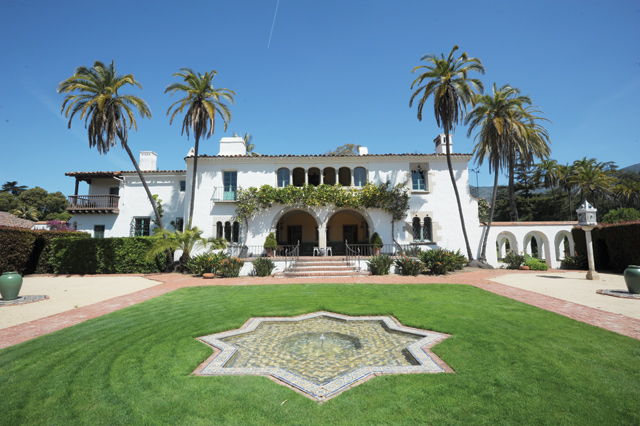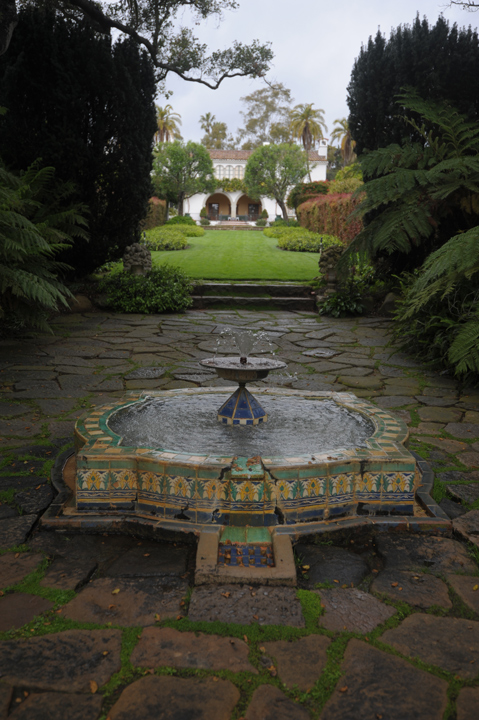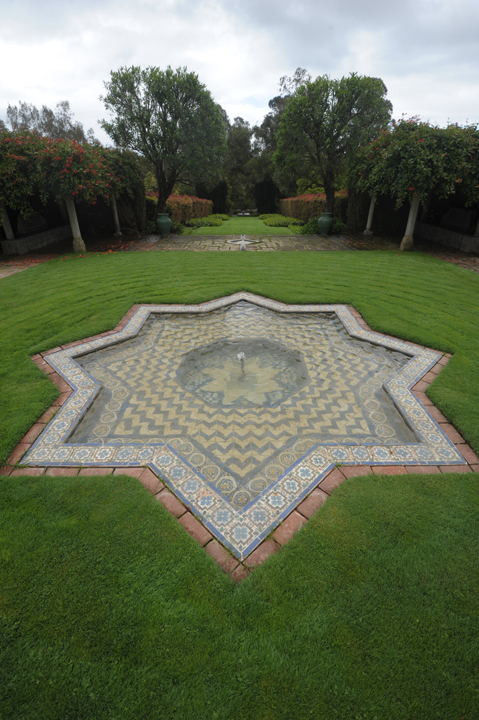Recognizing Roots of Santa Barbara Style
Celebrating the Legacy of Casa del Herrero

progenitor of S.B.’s trademark red-tiled-roof style.
Though it’s commonly thought that Santa Barbara architecture’s stereotypical red-tiled-roof stylings hark back to the days of the Spanish missionaries around the turn of the 19th century — an era that certainly serves as symbolic inspiration or, at least, convenient excuse — the real movement to shift away from Yankee normalization occurred much later. And many of the early sparks that lit the dominant design fire are on permanent display at Casa del Herrero, a private-estate-turned-national-landmark-and-museum that will be celebrated and supported this weekend with a swanky party called Architects of Change.
The trend goes back to 1915 at the Pan-American expo in San Diego, where the Spanish Colonial Revival design became a hot commodity. It was further popularized by the work of artist-turned-architect George Washington Smith, whose Santa Barbara–area homes — which he based largely on Andalusian farmhouses he had seen during a visit to Spain years earlier — grabbed national attention. Falling for the style was George Fox Steedman, an ammunition magnate from St. Louis who, after visiting his diabetic brother being treated by renowned S.B. doctor William Sansum, purchased an 11-acre property in Montecito, and, in 1922, hired Smith to design a home.

Though he’d been forced into early retirement and told to take it easy due to a heart condition, Steedman was probably Smith’s most persistent and involved client; the two engaged in sometimes heated correspondence about how to best adapt Andalusian design to a more temperate California climate. What resulted was a style that better incorporated sunlight and airflow and open spaces, compared to the often cloistered and tight construction needs of Andalusia, an alternately hotter and colder climate than Montecito. Steedman also employed landscape architects Ralph Stevens and Lockwood de Forest to design the grounds, traveled to Spain himself in 1923 to hunt down an eye-popping collection of antiquities and other interior design elements with antique experts Arthur and Mildred Byne (who did the same for Hearst Castle), and, in the 1930s, built an expansive workshop that gives the property its name (“herrero” means “blacksmith”).

A bit of curious timing also plays in this tale: As Steedman moved into his finally completed estate on the morning of June 29, 1925, a massive earthquake destroyed most of Santa Barbara. When it came time to rebuild the city, Casa del Herrero and other George Washington Smith designs — about 80 buildings throughout the region, from private homes to very public buildings like the Lobero Theatre and El Paseo — took center stage. But Smith never really saw his vision go viral, dying suddenly in 1930 at the age of 54.
His legacy persisted, though, largely in the work of protégé Lutah Maria Riggs, Santa Barbara’s first female architect who also worked on Casa del Herrero, the Lobero, El Paseo, and a private estate known as Los Sueños, which is playing host to this Saturday’s benefit party for Casa del Herrero. Without any of these characters, Santa Barbara would be seen in a very different, and far less Andalusian, light.
4•1•1
The Architects of Change benefit bash for Casa del Herrero is Saturday, August 10, 5-8 p.m., at Los Sueños, with summer cocktails, gourmet appetizers, and live music. Tickets are $150 and must be purchased by calling 565-5653 or emailing info@casadelherrero.com.



